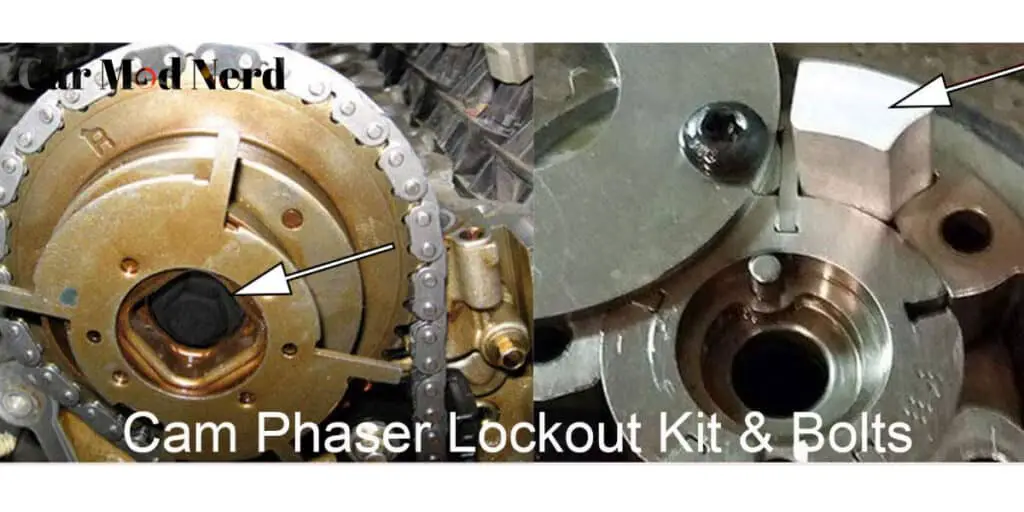Among many issues that your truck could possibly have, the worst you would wish to experience at any time f150 starts but wont stay running. This could be a result of many issues from the car parts. Today, I will provide steps on tests that you can perform to link the problem to the right part and quick fixes you can perform to help salvage the situation before it gets any worse.
Read my guide on best floor mats for f150 here.
F150 Starts But Wont Stay Running
The most common reason behind the problem is faulty fuel system. The fuel system comprises the fuel tank, fuel pump, injectors, and carburetors. It helps provide a fuel-air mixture in the engine and ensures the proper flow of fuel to the engine.
Check Fuel Pressure
Fuel pressure is an essential component in fuel systems, and any change could result in major problems.
How to Test the Fuel Pressure
To test for the fuel pressure of the car, first;
- Start the car, then let it idle.
- Using a pressure gauge, run the fuel pump, and record the reading on the indicator. -Repeat this process with the pump off.
- compare the readings against the specifications of the car.
But you might be wondering, what then do I do if I don’t have a gauge? Worry not, you can and watch out for a buzzing sound from the fuel pump. A buzzing sound indicates the fuel pump is in good condition, so is the fuel pressure. Failure to do this may result a problem.
Quick Fixes of Faulty Fuel Pressure
Apply some external pressure. I’m sure you’ve come along with a group of strong men behind a car trying to push it forward. This is, by far, the go-to alternative whenever your car goes off in the middle of the road.
Your fuel pump will maintain the required fuel pressure to run the engine at least for some miles by applying some external pressure. Download the F150 repair manual before attempting the repair.
Check Fuel Pump
A fuel pump is basically the distributor of nutrients in the car. It supplies fuel to the injectors, which then supplies to the engine, and for this reason, it has to be protected against any wear and tear.
It has to be regularly repaired. A normal functional pump should maintain the fuel pressure levels when the vehicle is running at low speed. However, a faulty pump will not maintain the fuel pressure requirements when driving at high speeds.
How to Test the Fuel Pump
Experience difficulty in starting the car, low acceleration, or increased fuel consumption. There could be a problem with your fuel pump. To check for this, you will need a flow meter to determine if the fuel pump supplies enough fuel to the injectors. If you lack a flow meter, your vehicle can also have a fuel volume test using a container, preferably a measuring container. Using the following quick steps.
- Start the car, then let it idle.
- collect a considerable amount of fuel for five seconds. This will be enough sample for the job. -Compare the collected sample against the specifications.
Download the repair service manual here.
Quick Fixes of Faulty Fuel Pump
If you experience this in the middle of the road, miles away from a service station, then the go-to option would be to maintain the engine’s heat. If the car is left to cool, then the engine automatically resets itself, disrupting the car’s normal functioning.
Check Fuel Filter
A fuel filter cleans the fuel tank by filtering out any contaminants, e.g., dust and stones present in the tank. This ensures that the fuel is free from impurities before it reaches the pump. It also helps to ensure that the engine is protected from any form of contamination that could arise from the contaminants.
It ensures that only clean and pure fuel reaches the engine. However, after filling fuel and the filter trapping the contaminants, the filter may become clogged with impurities. This, in turn, affects the flow of fuel to the engine. It is therefore advisable to frequently and constantly replace and repair your fuel filter. For example, a filter in a ford 150 should be replaced after 20,000 to 40,000 miles.
How to Test the Fuel Filter
The easiest way to check if it’s genuinely the fuel filter causing the difficulty in starting your car would be doing a visual test. Here, you basically;
- Peep through the filter window if your filter has one.
- Check for any darkness, dirt, or gumminess inside.
- Alternatively, you can check the outside of the filter for any damages.
You could also check out the replacement period. A fuel filter in a ford mostly has a green sticker; if it lacks one, it may be initially replaced. If it still has the sticker, check the specifications and find out if it’s time you replaced it. Replacement guide with the step-by-step manual here.
Quick Fixes of Faulty Fuel Filter
- Remove the fuel filter.
- Blow air through it to remove the contaminants.
- Alternatively, install a hose at one end.
- Blow air through the filter.
If you notice no contaminants coming out through the other end, then you should consider replacing them. Get a manual from here and follow along.
Check Alternator
The alternator generates electricity by converting mechanical energy into electrical energy. The electricity is used for electrical power components in the vehicle, such as radio and charging systems. Alternators use the alternator belt to generate the needed electricity. Therefore, any breakage in the belts spoils the alternator. Alternators should be replaced after 7-8 years of continued service. If you are experiencing any electrical problems and you’ve had the same alternator for a while now, it’s time you considered getting another one.
How to Test the Alternator
To check for a spoiled alternator, you will need to;
- Park your car on fairly level ground.
- Turn off the engine.
- Connect the positive lead to the positive terminal on the battery.
- Do the same to the negative terminal.
- Using the voltmeter, check the voltage readings.
- Compare to the specifications. (about 12.5 volts)
Now turn on the engine and repeat the process. The voltage should read between 13.5v -14.5v.
Quick Fixes of Faulty Alternator
Fixing an alternator requires you to disassemble and assemble. Therefore, you need to remember each step you follow.
- Disconnect the battery.
- Remove the belt.
- Remove the alternator.
- Disconnect the wires.
- Repeat the process in reverse to assemble the parts.
This is an easy process and can quickly be done by anyone.
Check Carburetor
Carburetors help maintain the car’s air-fuel ratios by ensuring proper oil combustion in the engine, especially in older manual cars. A bad carburetor will impair the air-fuel ratios causing a malfunction in the vehicle.
How to Test the Carburetor
- Start the engine and let it idle.
- Remove the air cleaner.
- Check through the nozzle for any oil leakages.
- If gasoline is overflowing, then there is a problem.
Quick Fixes of Faulty Alternator
The easiest way to repair a carburetor without replacing it is to clean and rebuild old parts in the carburetor. Here are the manuals with step by step guide and images to download.
Check Camshaft Sensor
The sparks’ firing is coordinated by proper signals sent out by the camshaft sensor to the ECU. This informs the ECU of the camshaft positioning, helping in coordination of the firing. In case of a problem with the sensors, no information will be sent to the ECU, and this could result in the sudden stopping of the car.
How to Test the Camshaft Sensor
- Unplug the electrical connector.
- Check for rust, oil.
- Check for bad wires, e.g., broken wires, burned wires
Alternatively, you could use a multimeter. - Unplug the connector
- Without starting the engine, connect your AC /DC multimeter to the sensor pins.
- Touch the black lead to the negative terminal of the battery(should produce 1.5v)
- Touch the red lead to the positive terminal of the battery.
Quick Fixes of Camshaft Sensor
Replacing a camshaft sensor is relatively easy. All you need to do is;
- Unplug the electrical connector.
- Unscrew the mounting bolt.
- Remove the sensor.
- Install a new one.
Get a manual from here to be on the safe side.
Check Vacuum Leak
A vacuum leak occurs when there is too much air in the engine.
How to Test the Vacuum Leak
To identify vacuum leaks, you can;
- Spray water to the suspected areas when the engine is running
- Areas with the vacuum leak will suck in and seal the water.
- You can also use a carburetor spray to sparingly spray the suspected. The leak areas will slightly ignite a fire, indicating a leak.
Check Battery
The battery is by far the life of the car, without which no movement will occur. It is an essential component in the overall functioning of the car. It provides the power in the vehicle that helps in the movement of all the car parts. Just like any other electronic, its performance and efficiency are dimmed to reduce overtime.
How to Test the Battery
Use a multimeter. Here’s how you test the battery using a multimeter.
- Turn off the engine.
- Connect the positive and negative terminal with the multimeter.
- Record the reading on the multimeter.it should read 12.5v
Quick Fixes of Battery Issues
Jumpstart using cables keeps the battery running. However, do not turn off the engine since it will not start without the use of jumpers.
Check Fuel Injectors
Fuel injectors are used to direct fuel into the engine. When a car is turned off, the combustion chamber still has fuel in it. When the engine completely cools down, the gas vapors cool and settle on the injectors. Repeated heating and cooling of the engine could result in the accumulation of dust particles in the injectors. It could also clog from impurities present in the fuel itself. This, in turn, affects the fuel delivery to the engine.
The contaminants in the fuel injector could be removed by flashing the injector to remove the debris. These step-by-step guides for your model can come in handy for jobs like this.
How to Test the Fuel Injectors
- Remove the cover from the air cleaning exposing the injectors.
- Start the engine.
- Observe the fuel spray pattern.
- A regular V pattern indicates a clean injector.
- Single irregular pattern indicates a dirty injector.
You could also use a mechanic’s stethoscope to test for dirty injectors.
Quick Fixes of Fuel Injectors
The easiest and cheap method to use would be to use a bottle of fuel injector cleaner, which helps clean the dirty injector.
Check Fuel Regulators
A fuel pressure regulator is part of the fuel system and is in charge of regulating the system’s fuel flow. There are two types of fuel regulators; mechanical and automatic. The mechanical fuel regulators use diaphragms that are operated manually to change the pressure of the fuel. In contrast, automatic regulators, as the name suggests, uses servers to regulate the fuel pressure.
Bad regulators will result in either low fuel pressure affecting fuel injectors’ flow or too much pressure causing the injectors to deliver more fuel than they should. Therefore any fault in the regulator will significantly affect the engine and the overall performance of the car.
How to Test the Fuel Regulators
It could be following the same steps to test for fuel pressure. Testing the pressure allows you to also check for the state of the fuel regulators.
Check Engine Control Module (ECM)
ECM is also known as the powertrain control module (PCM), the car’s computer. It receives information from the engine sensors and finds out the fuel needed for all possible fuel operations. No vehicle can function without an ECM. Here’s how you find the ECM.
How to Test the Engine Control Module (ECM)
- Performing a visual inspection is the most suitable option to check for the condition of the ECM.
- Watch out for any rust in the parts, poor wiring, among any other uncommon occurrences in the engine.
- You can perform a smell test, watch out for any strange odors.
Quick Fixes of Engine Control Module (ECM)
Replacing the ECM is a simple task that could be done in the comfort of your home. However, it would be best to have proper guidance from the car manual and have purchased the right module for the f150.
The recommended steps are not to help solve the problem or prevent it from recurring but will help spare you some coins. They are simple everyday steps that you can undertake anytime and anywhere without the help of a mechanic when your f150 starts but wont stay running. Remember no one else knows your car better than you do, and therefore, always watch out for any unusual symptoms from your car. Get the right manual and get your hand dirty, that’s all you need.





